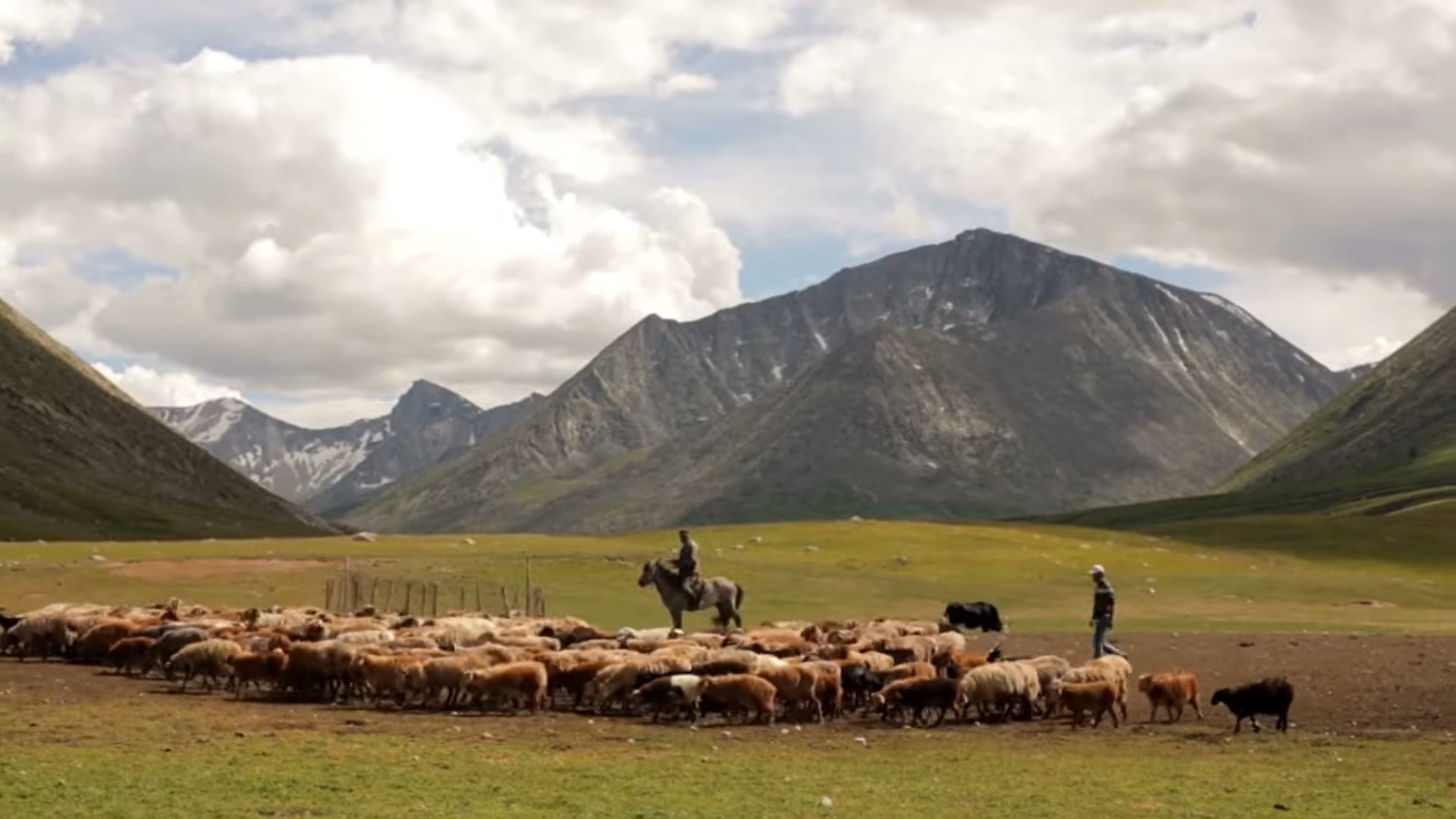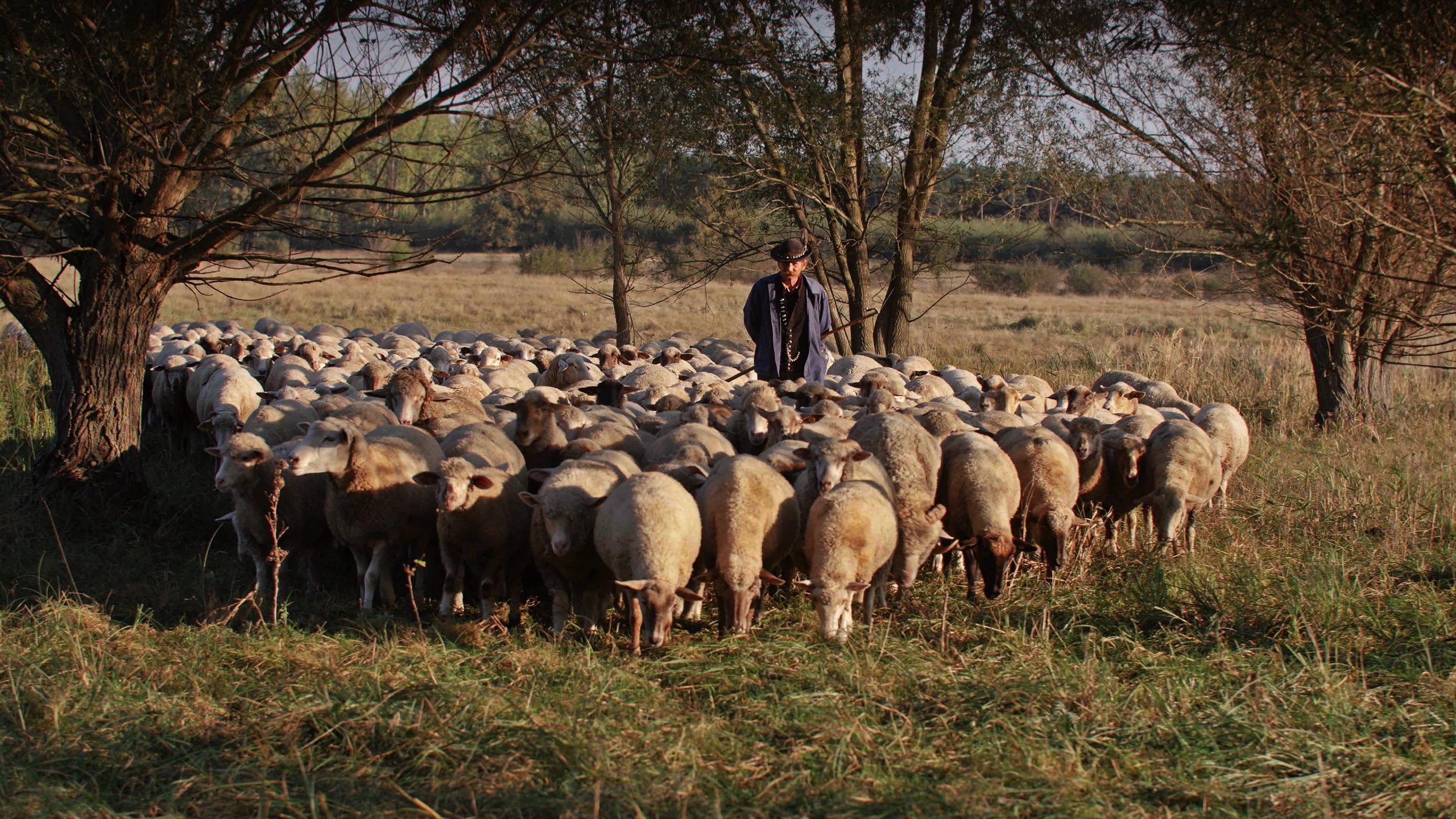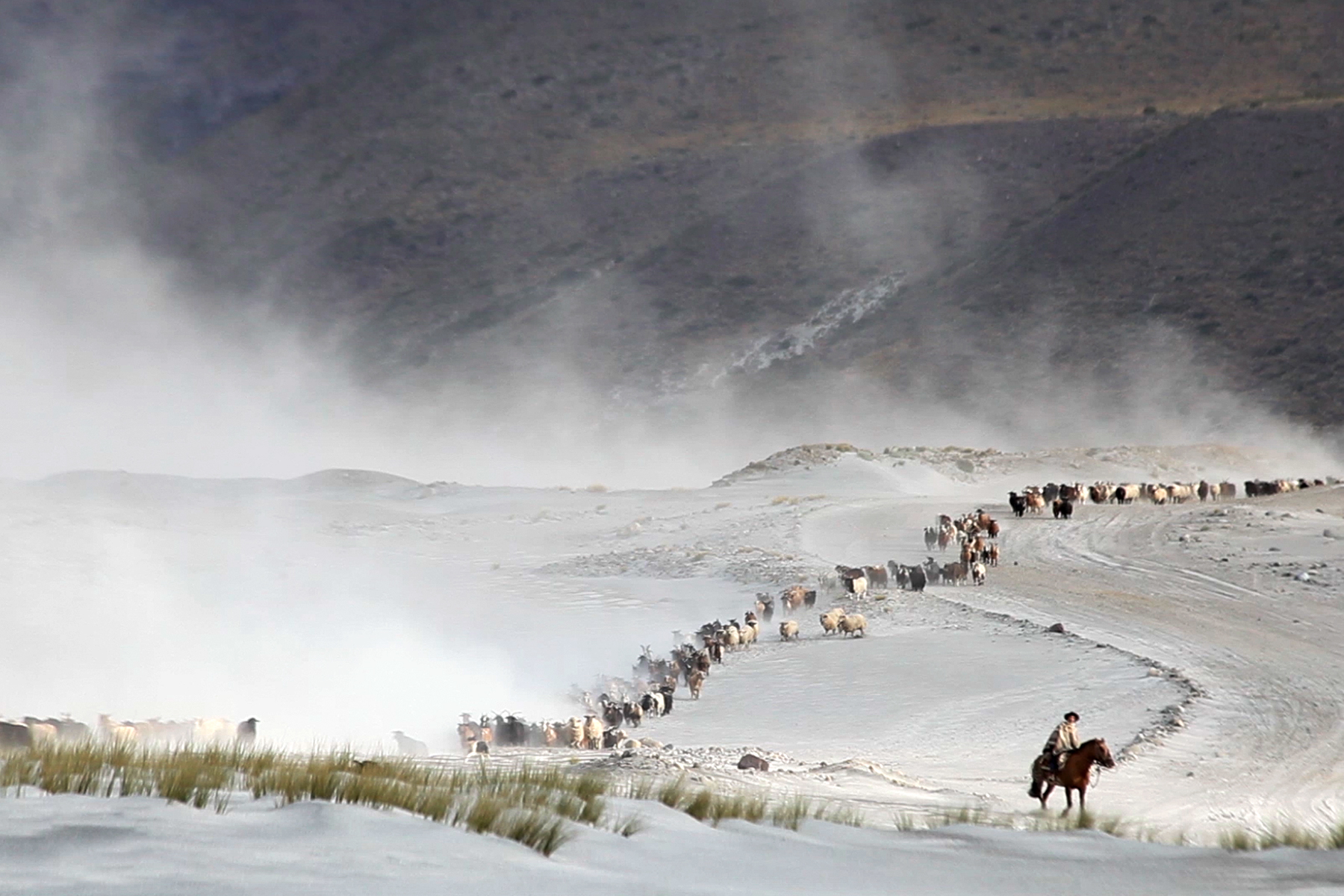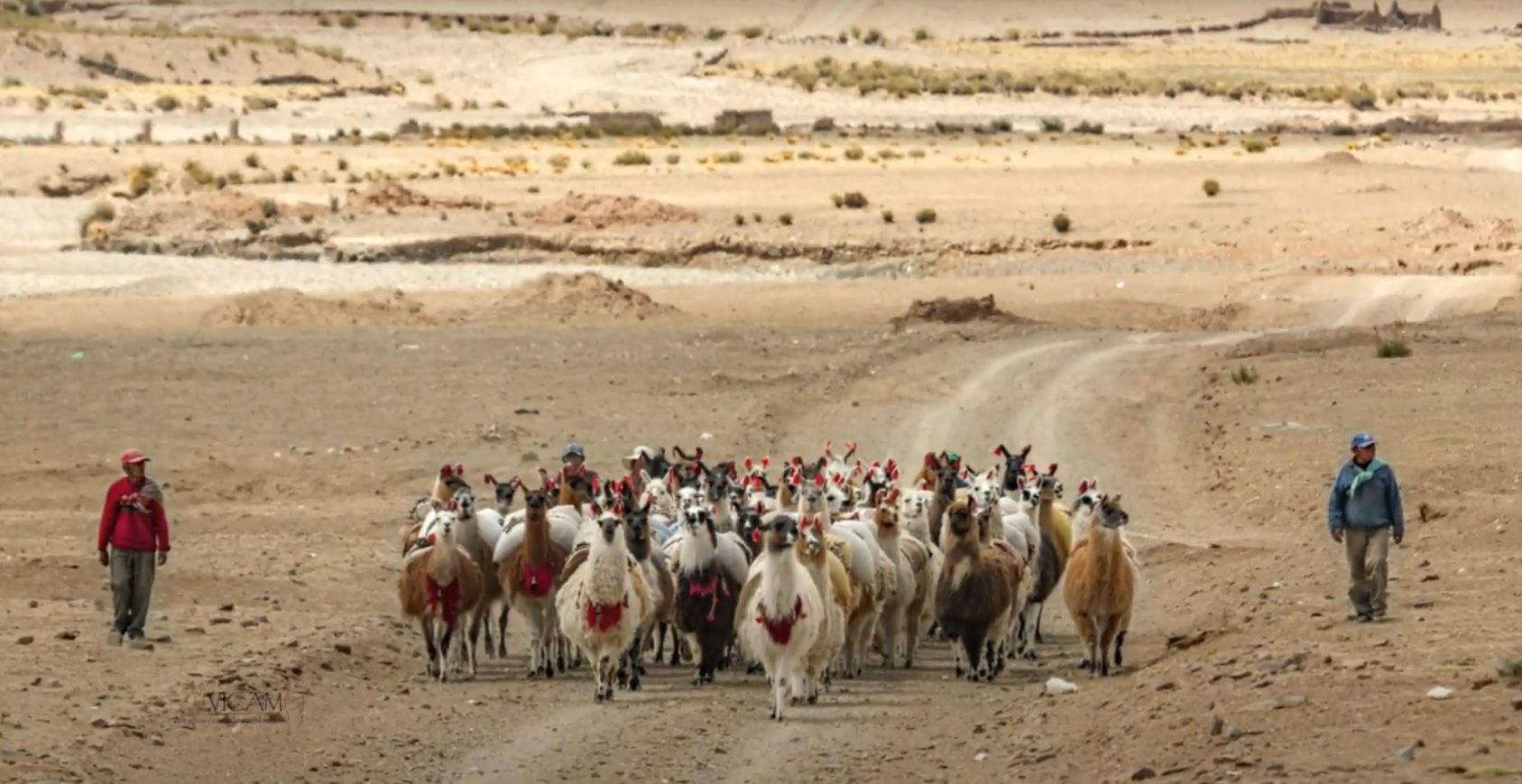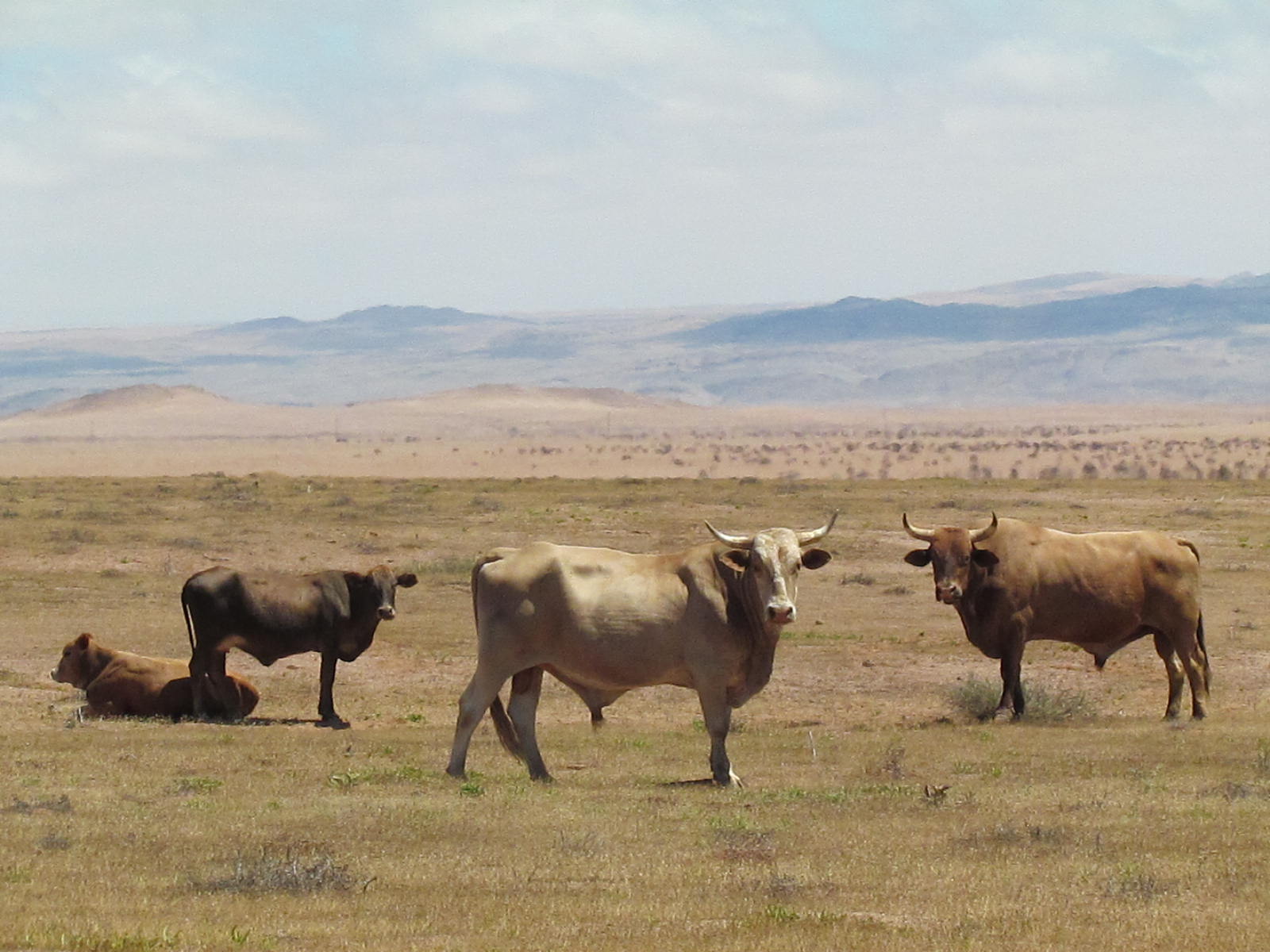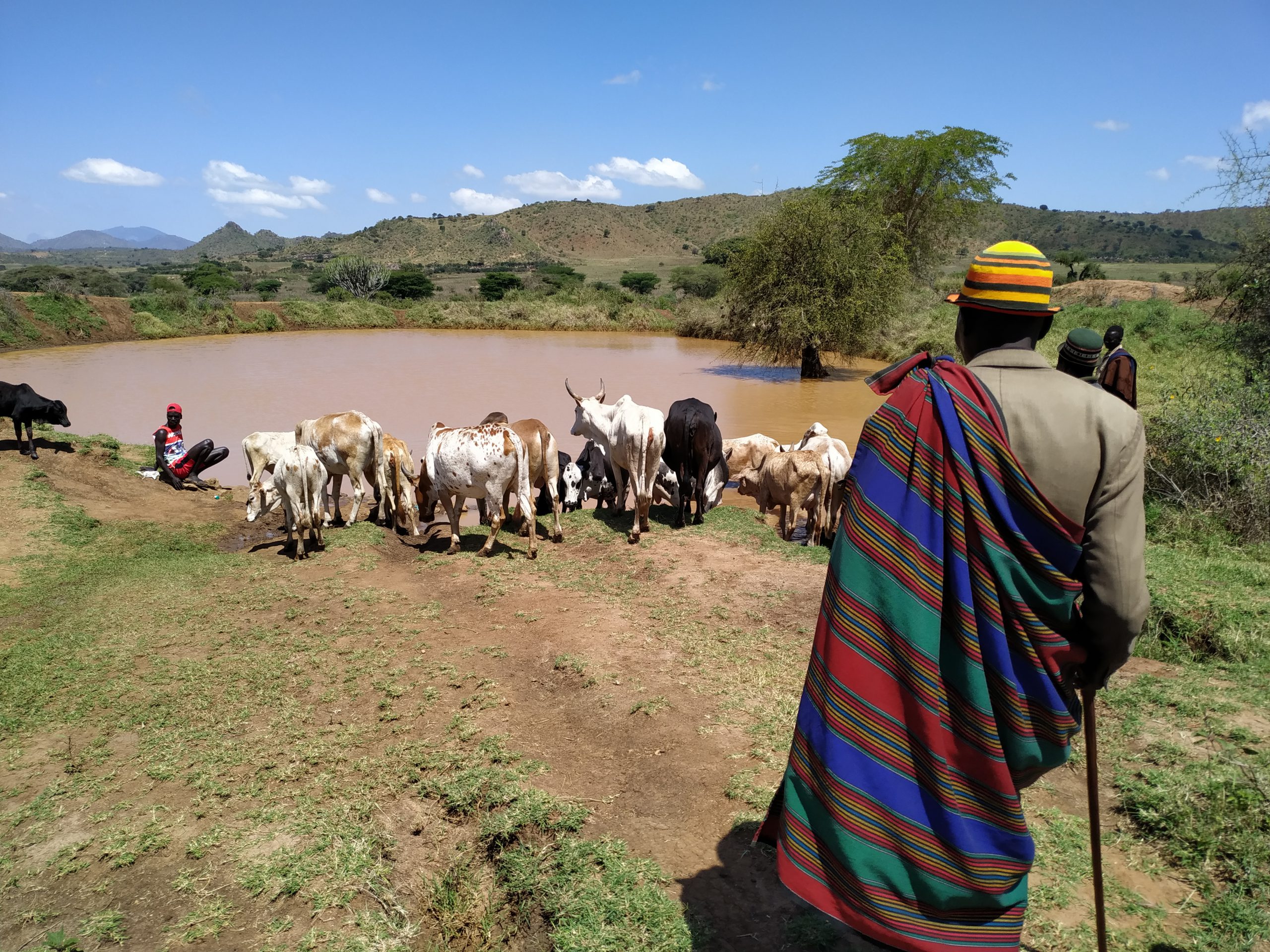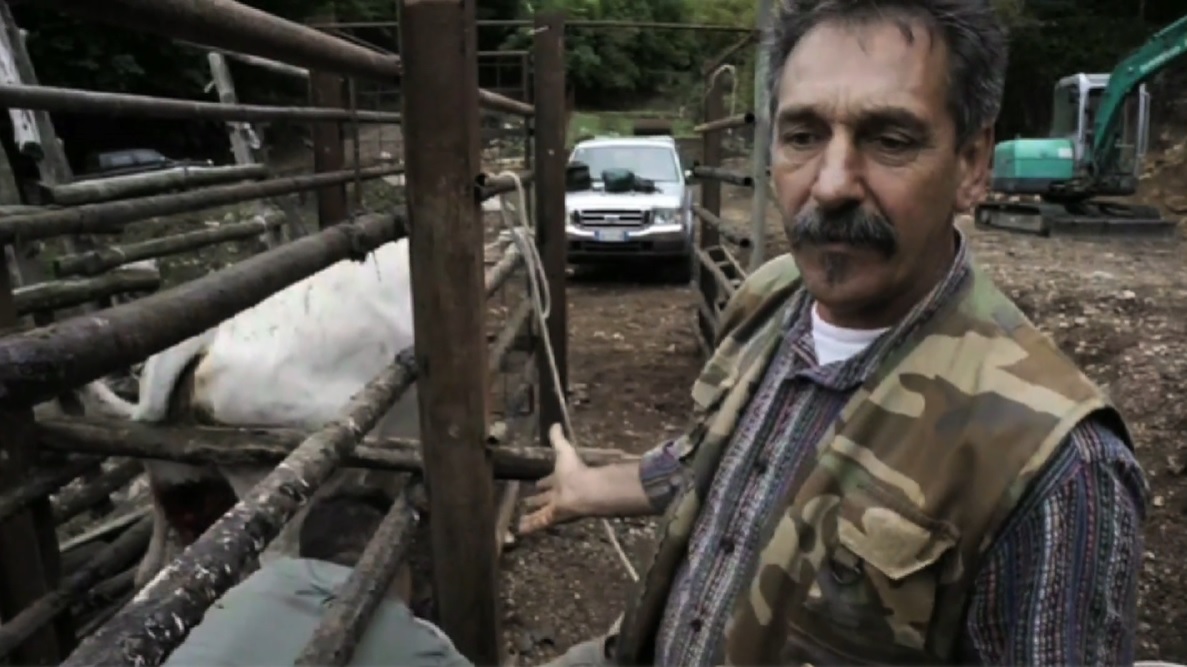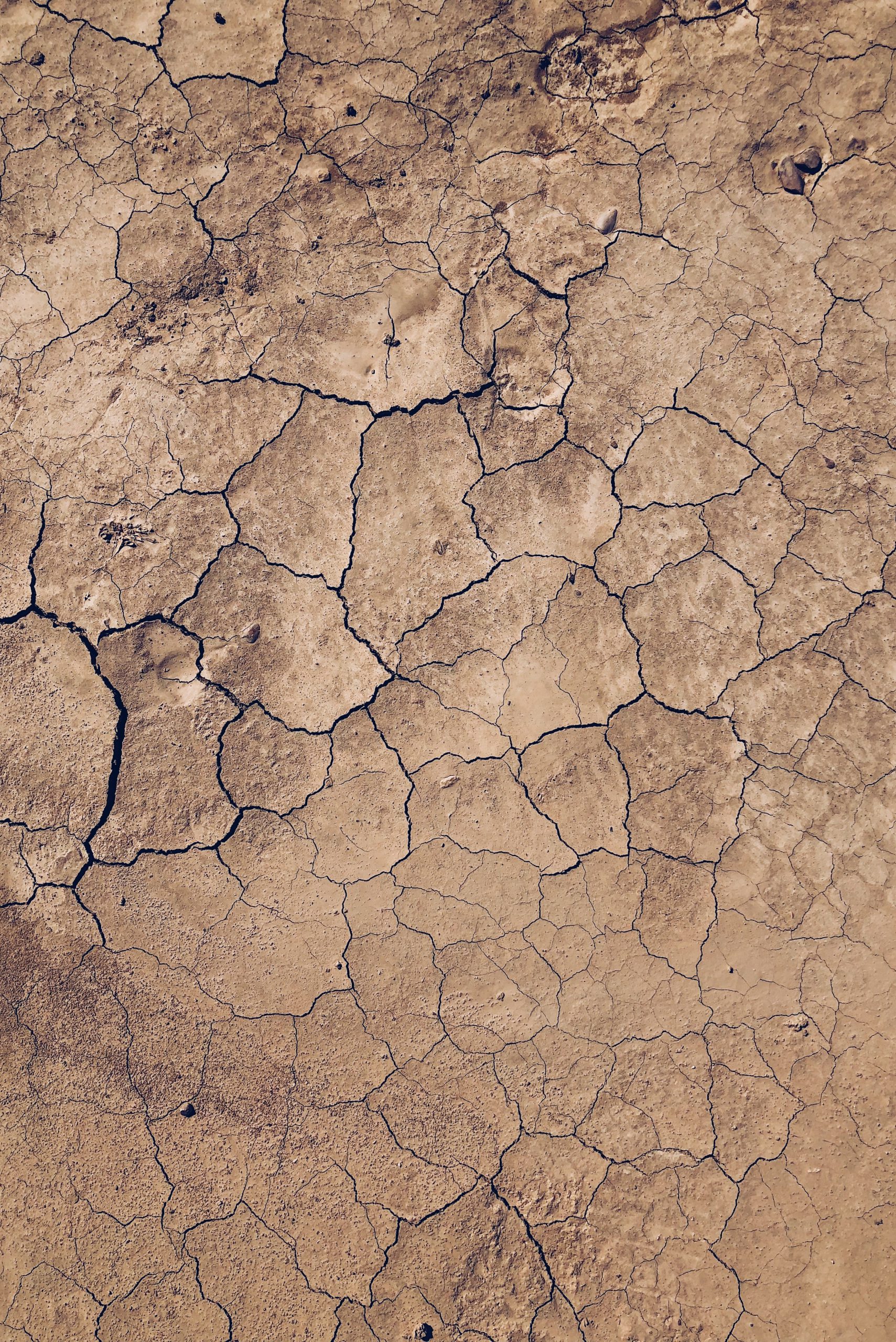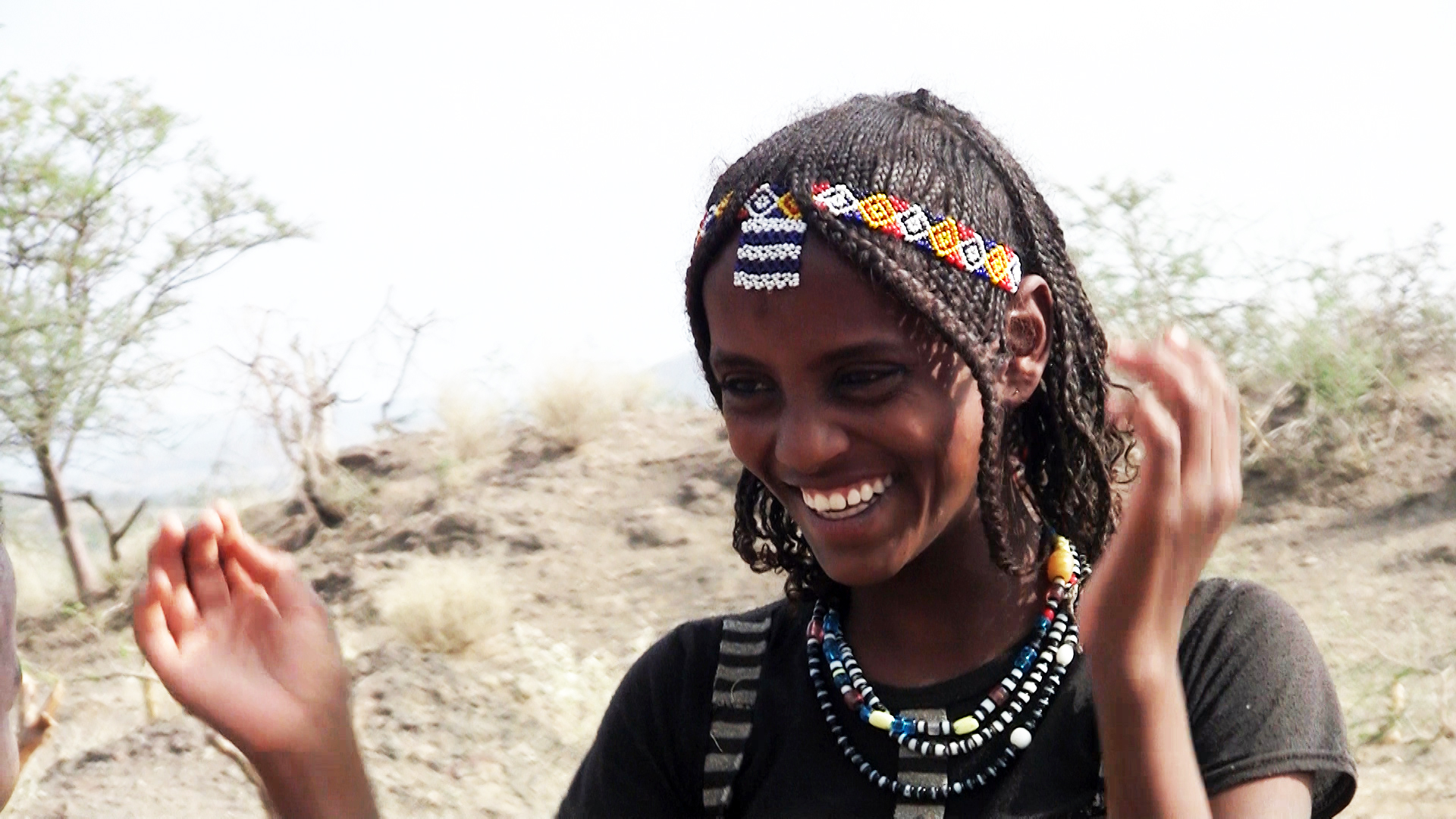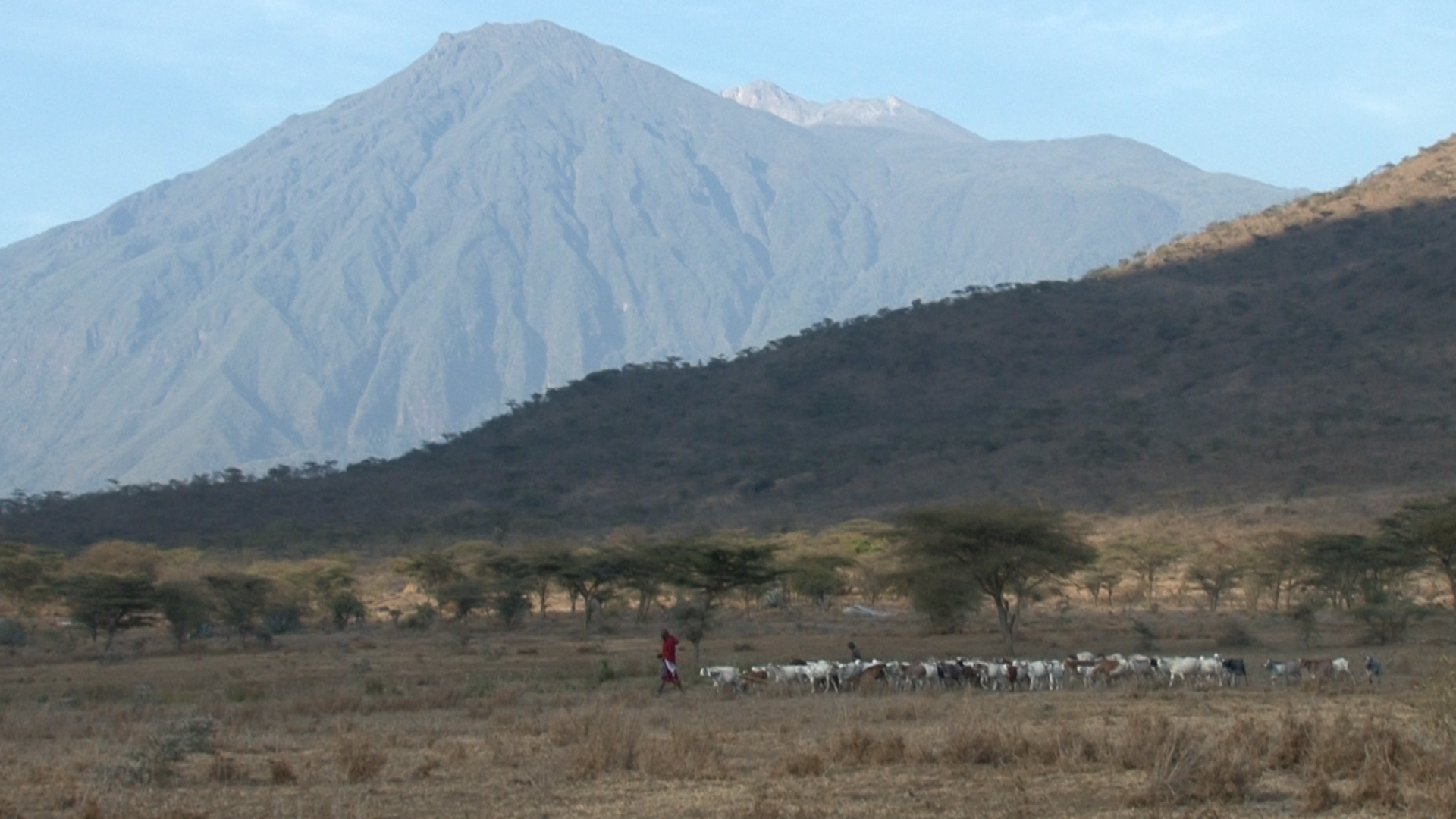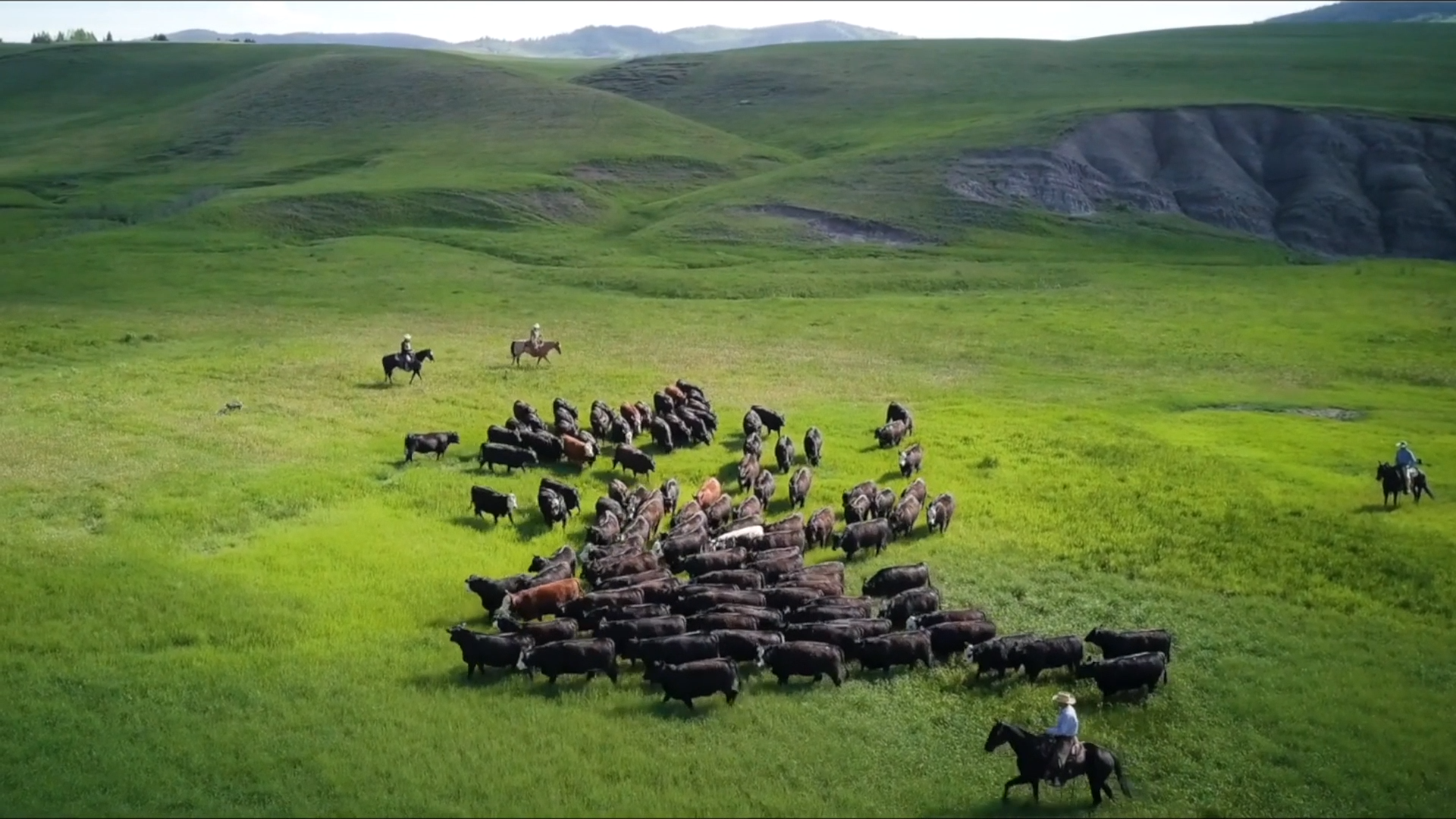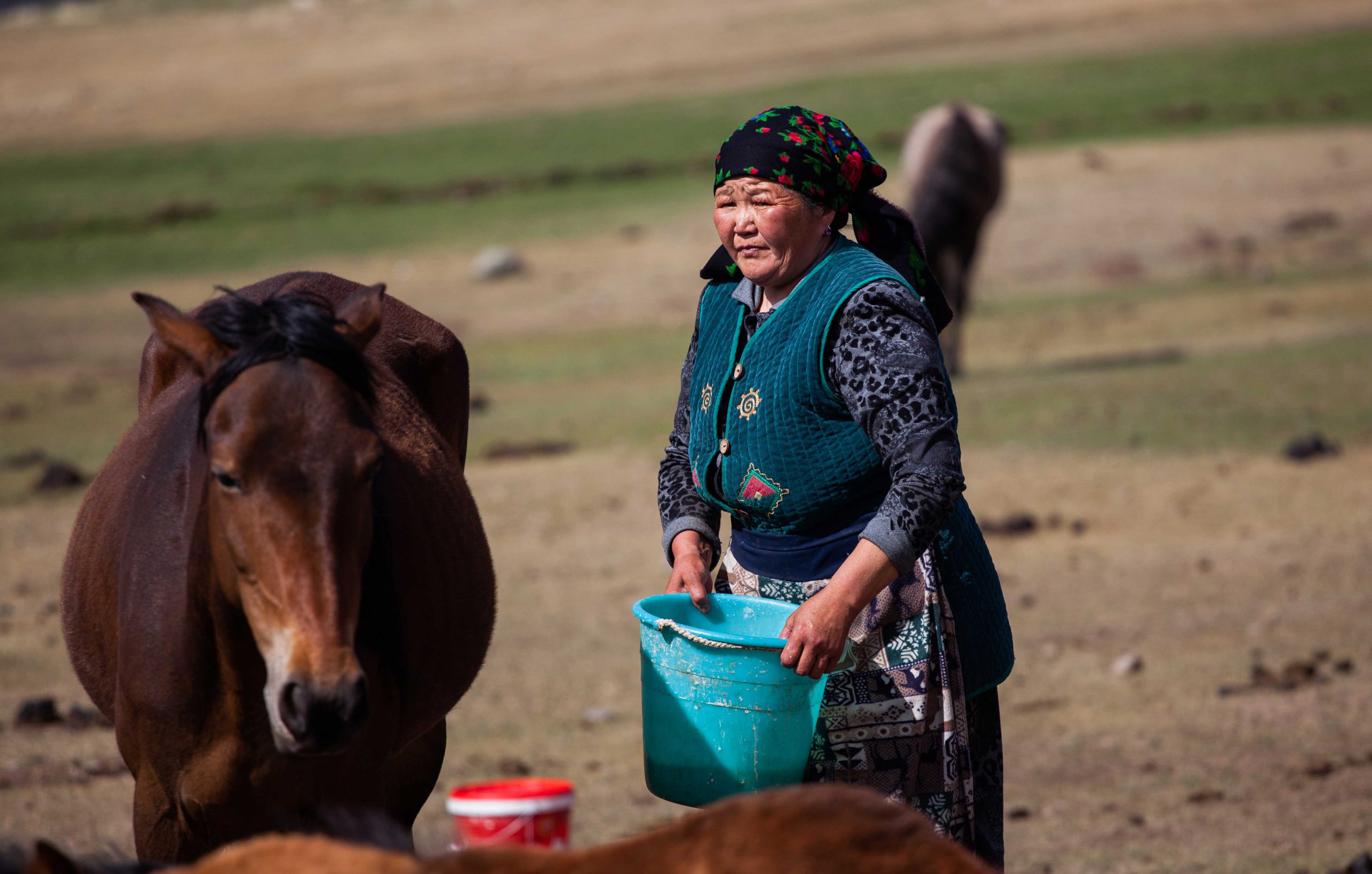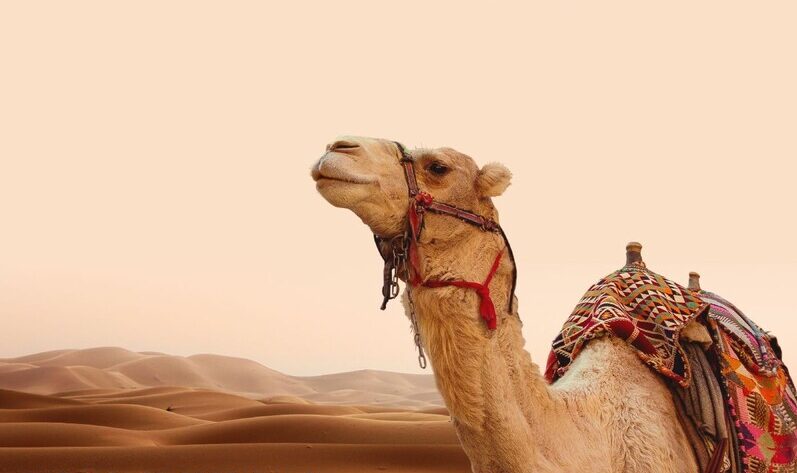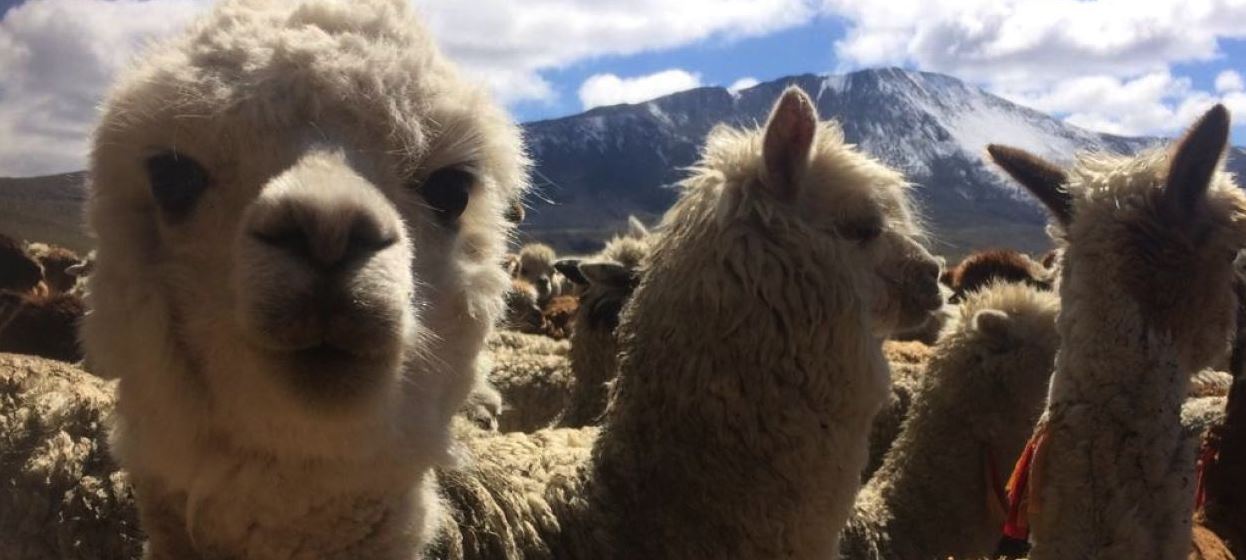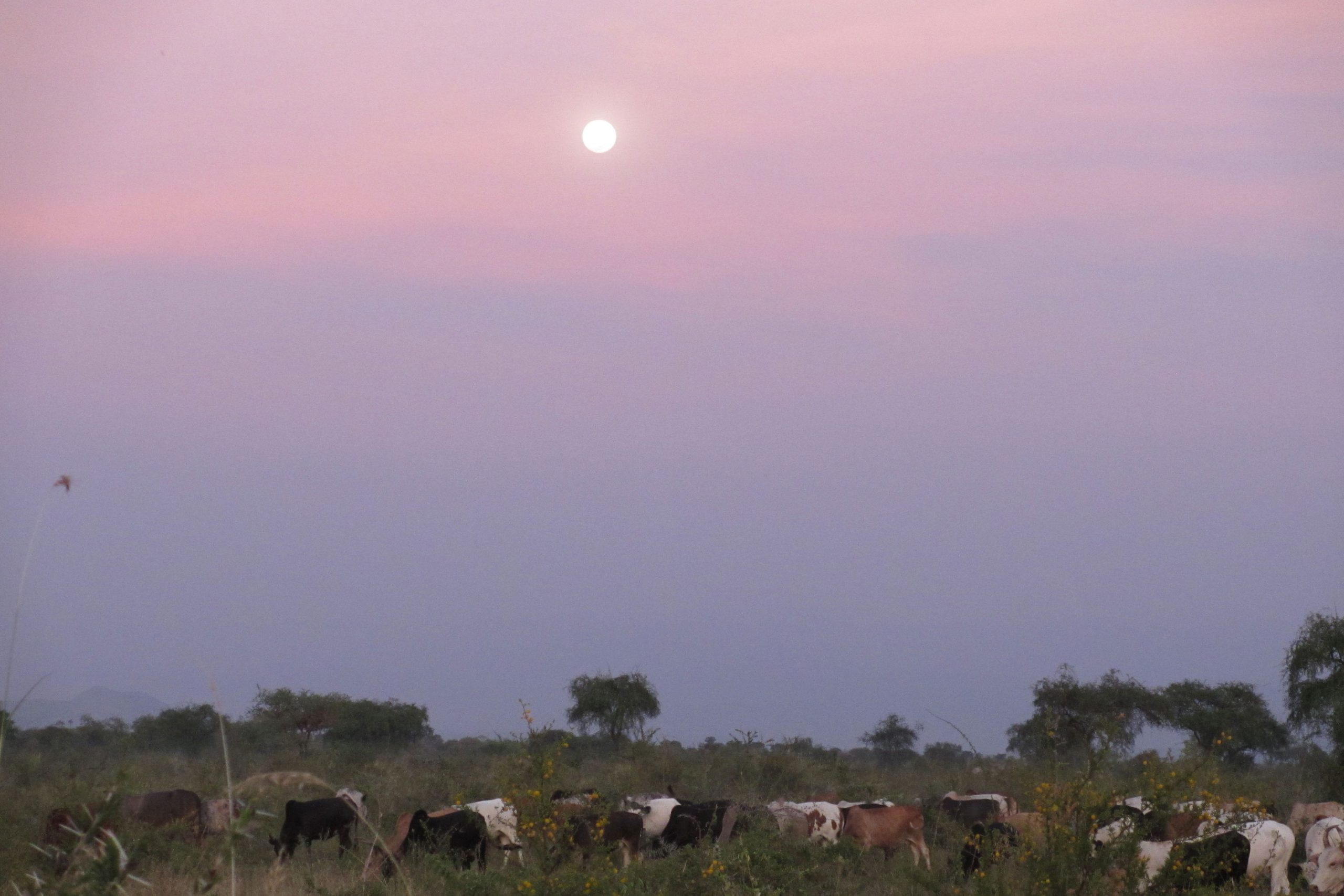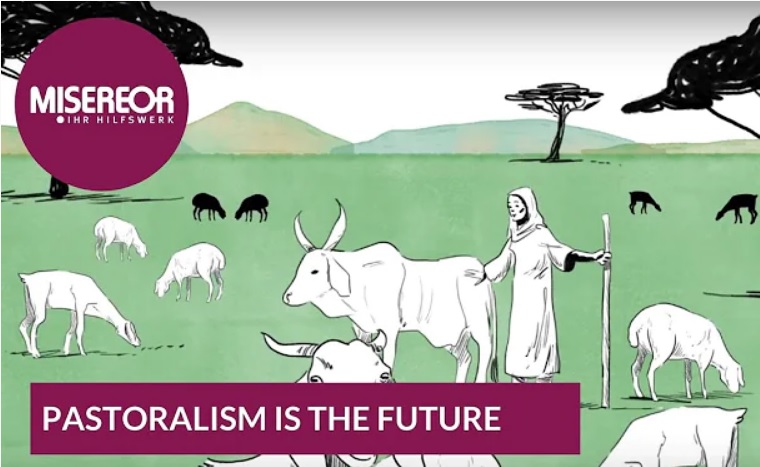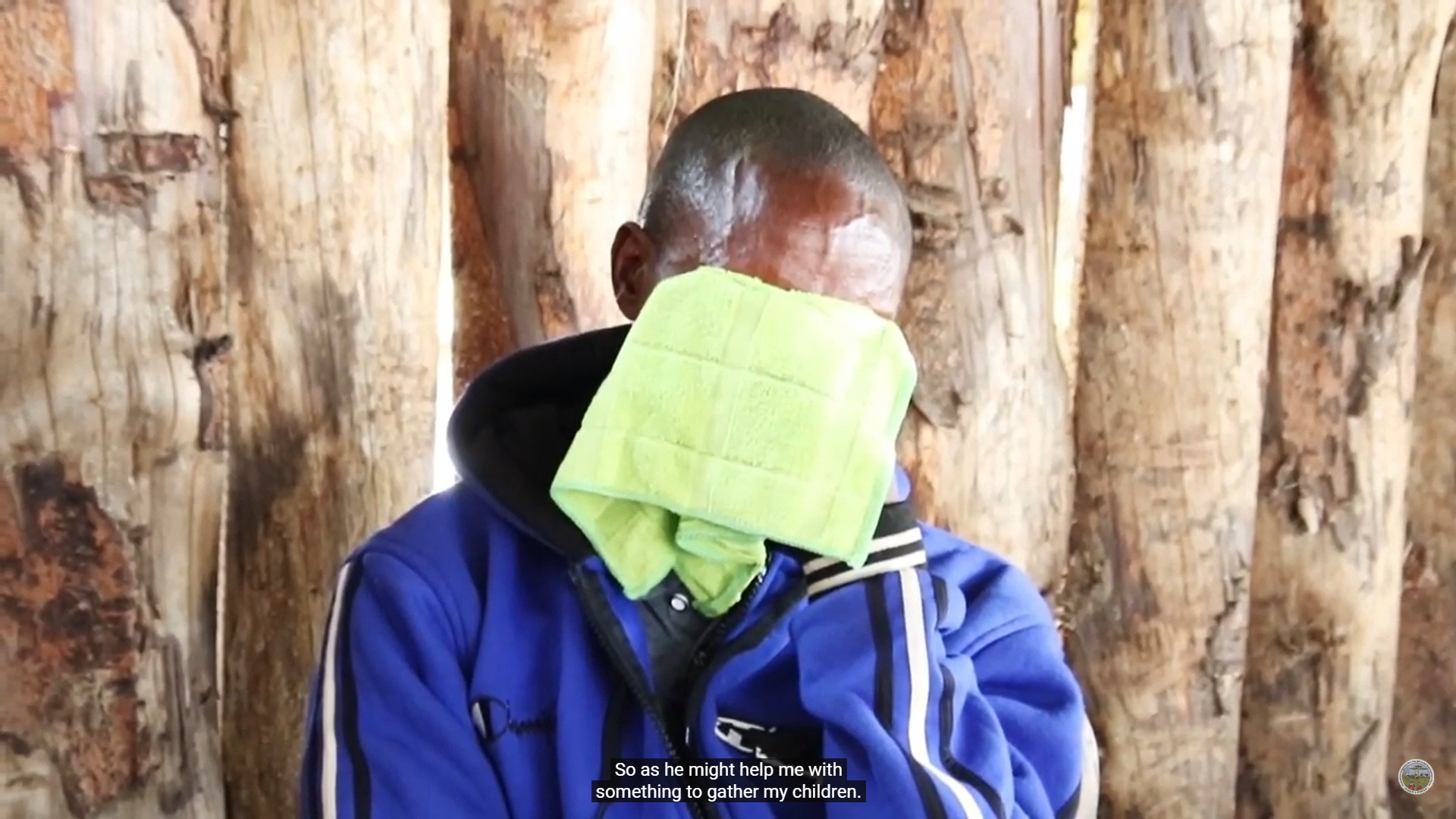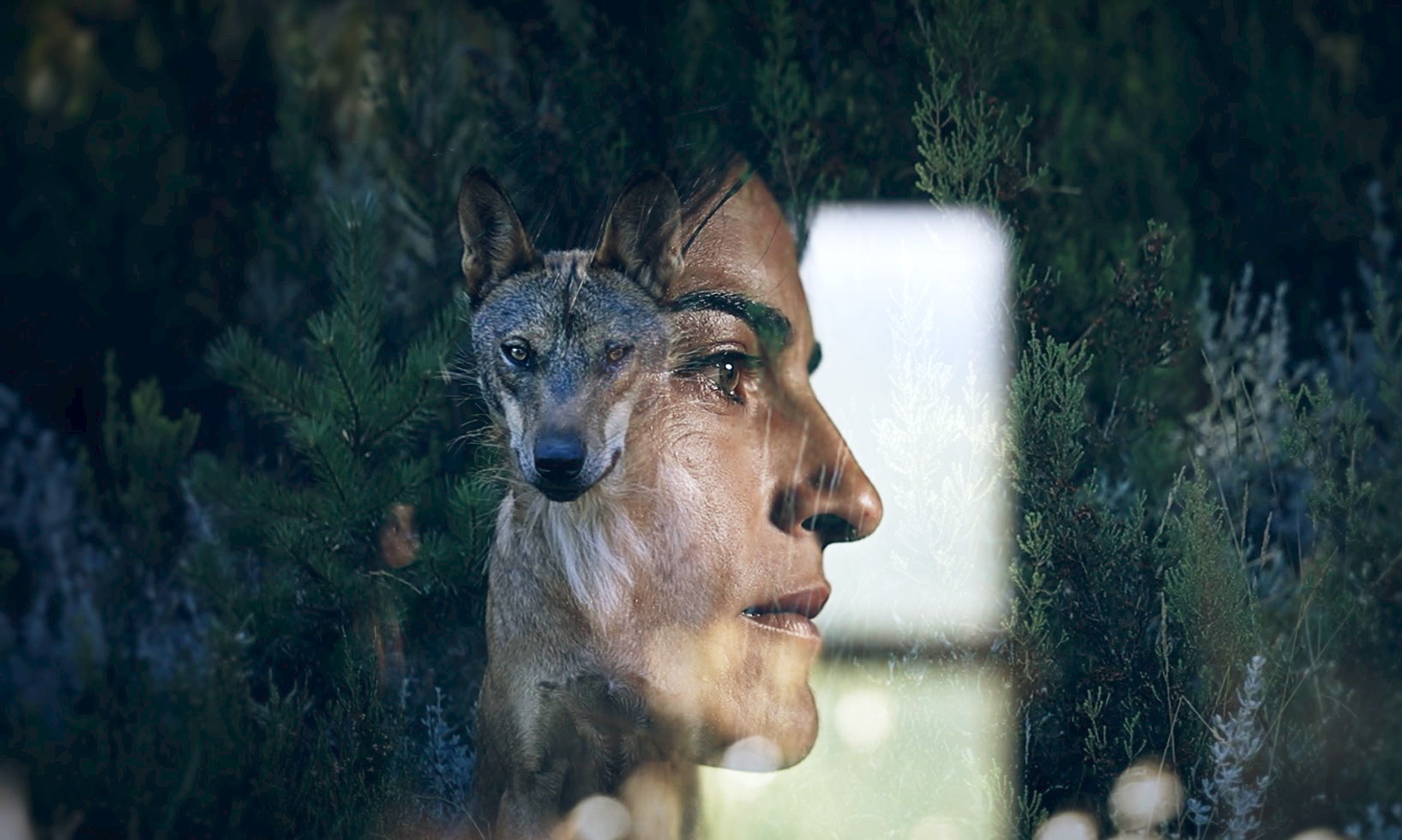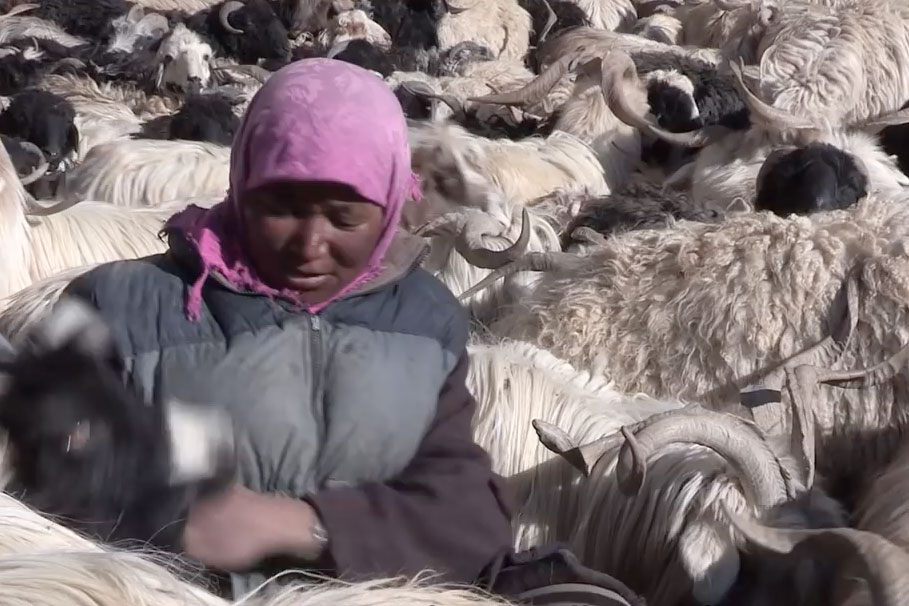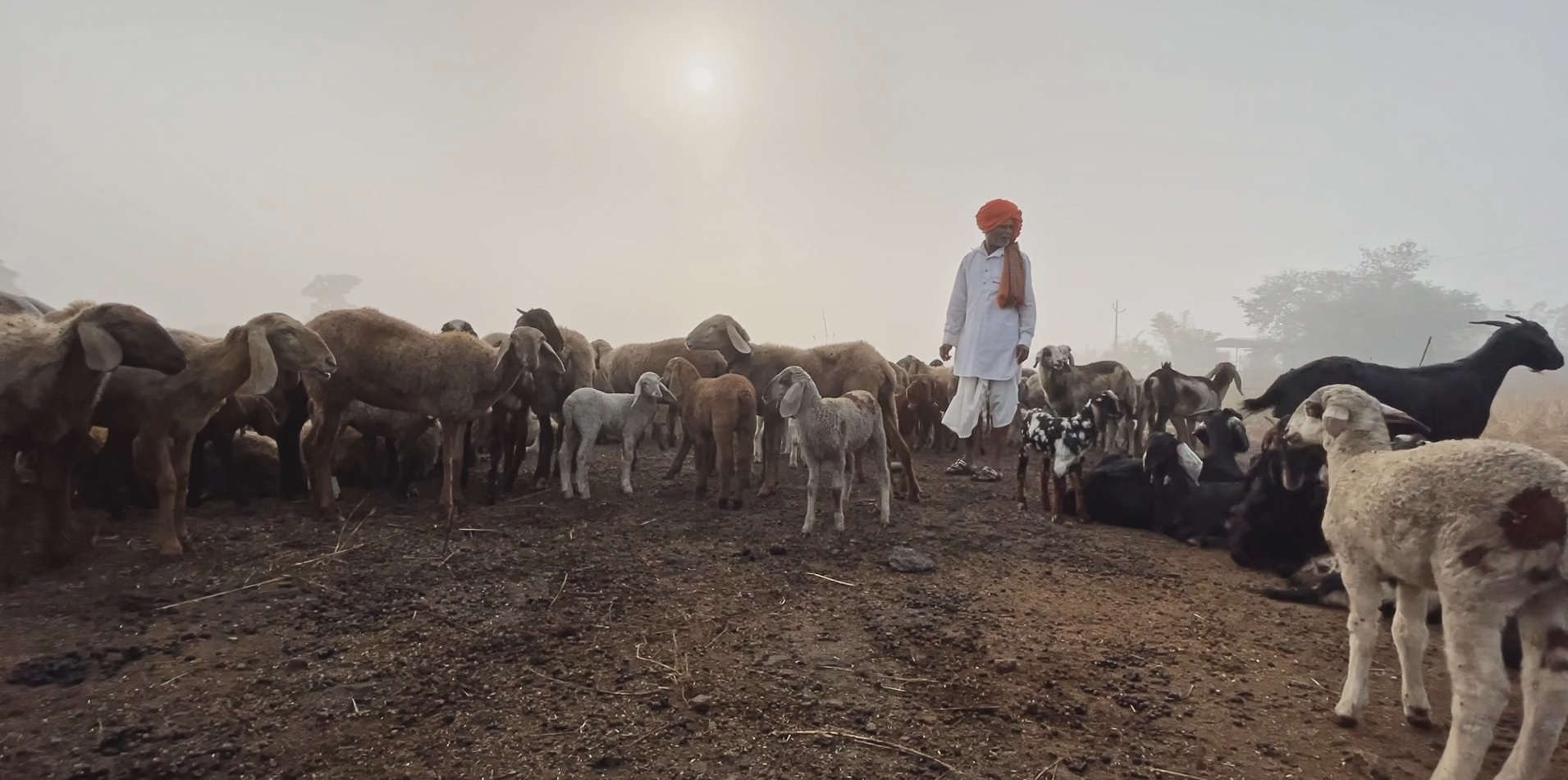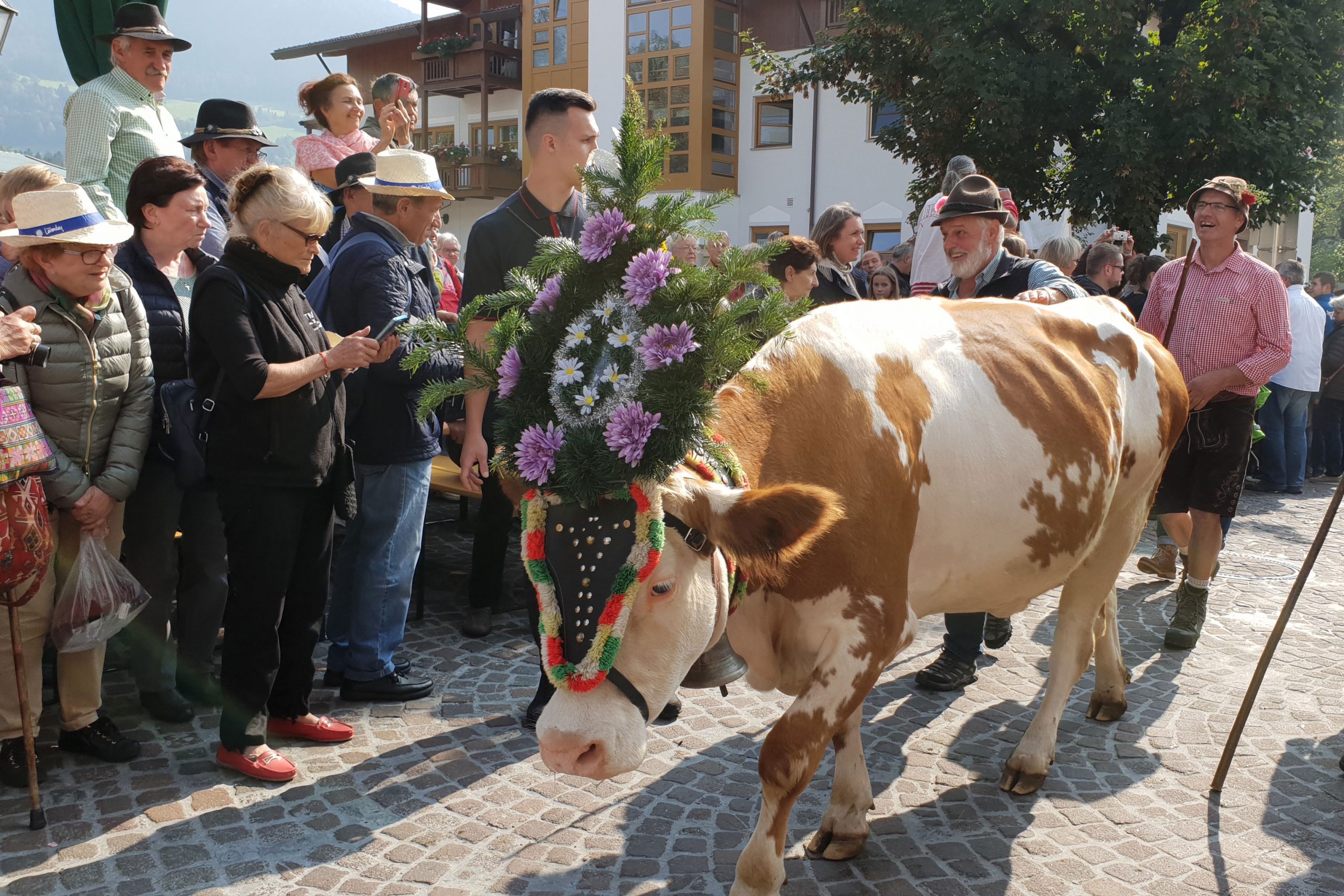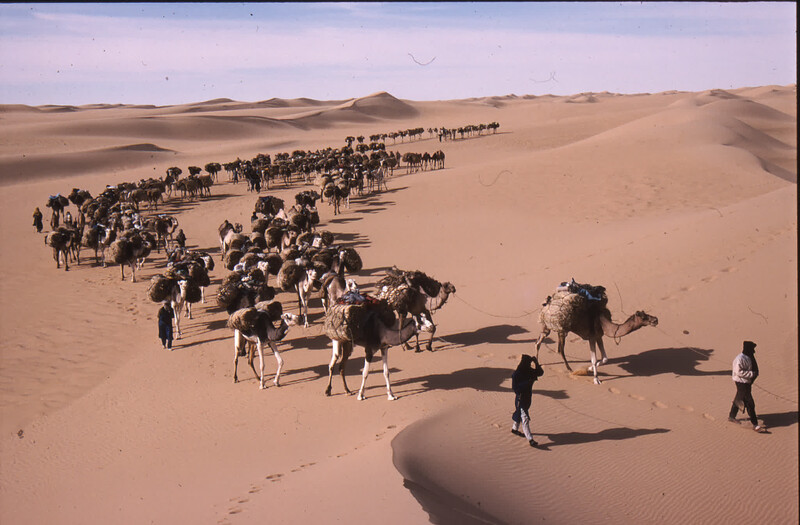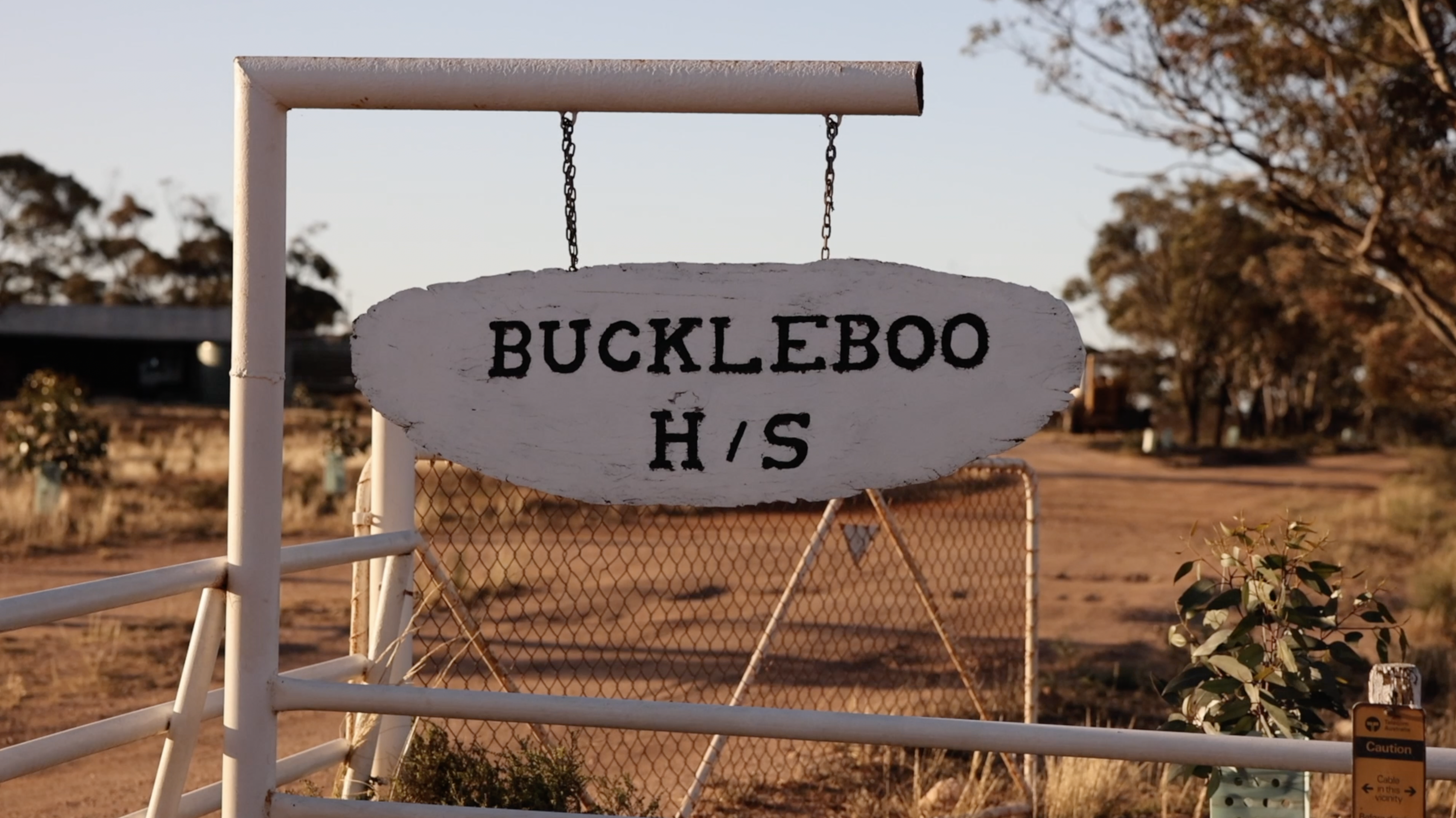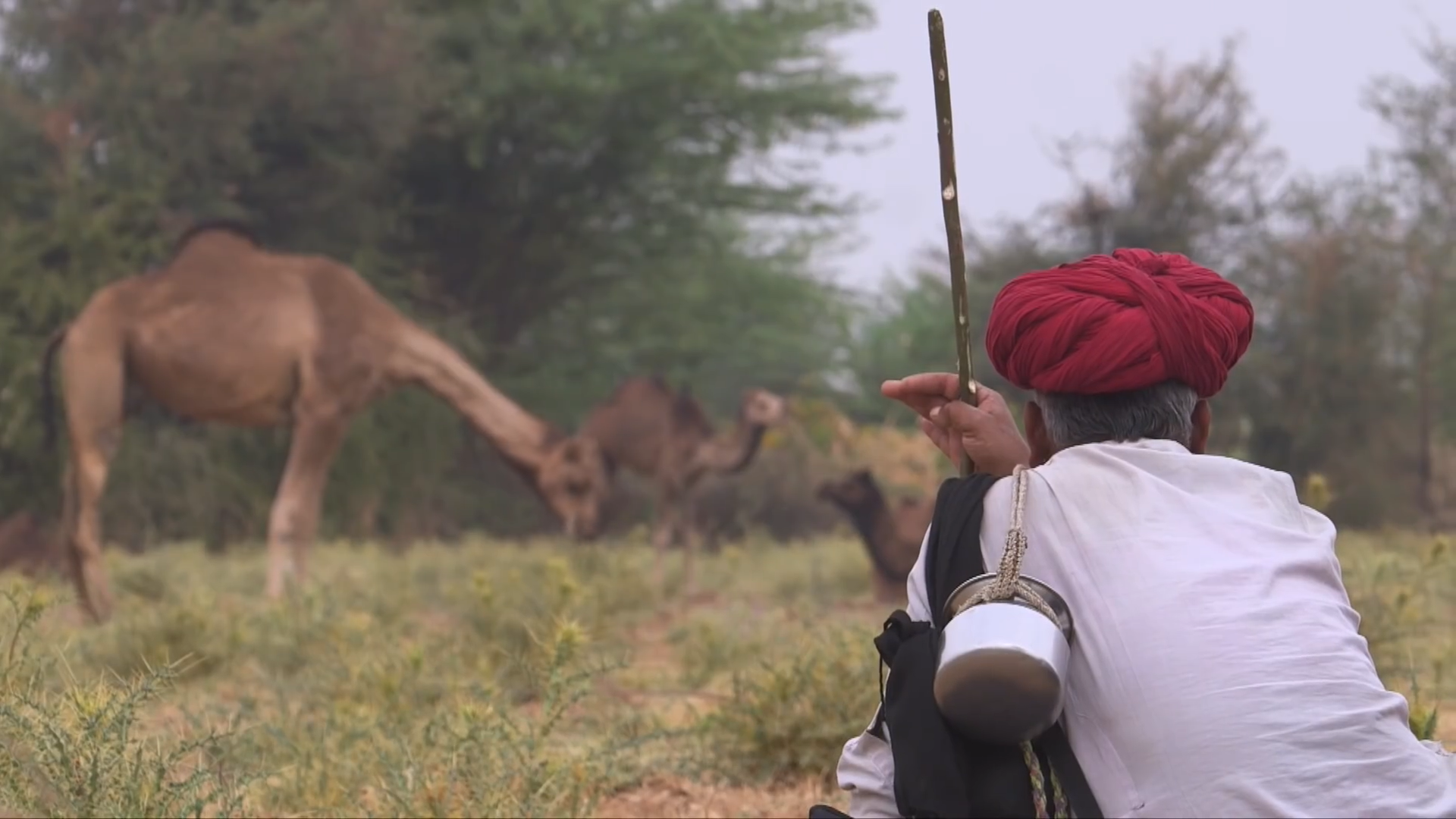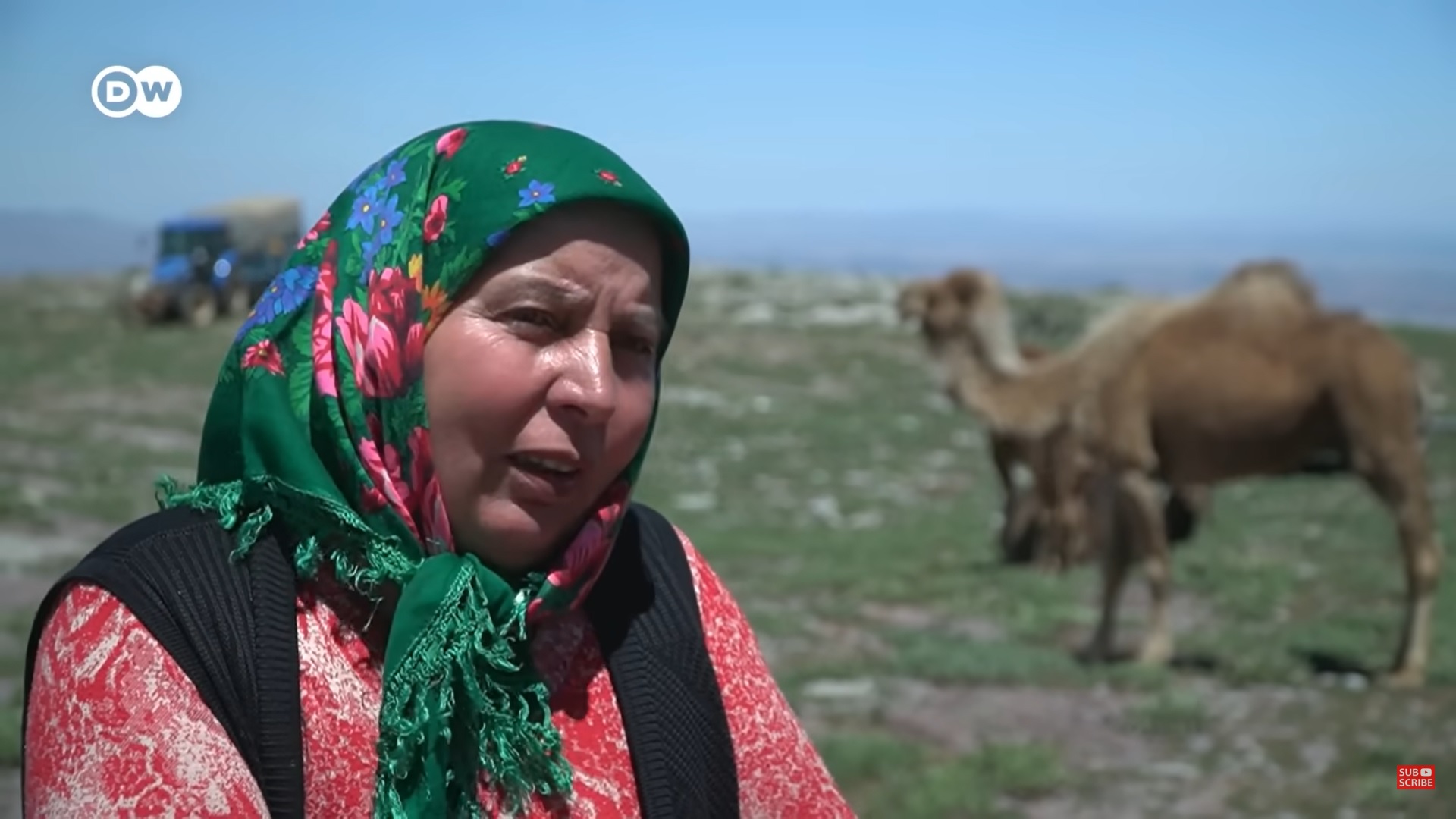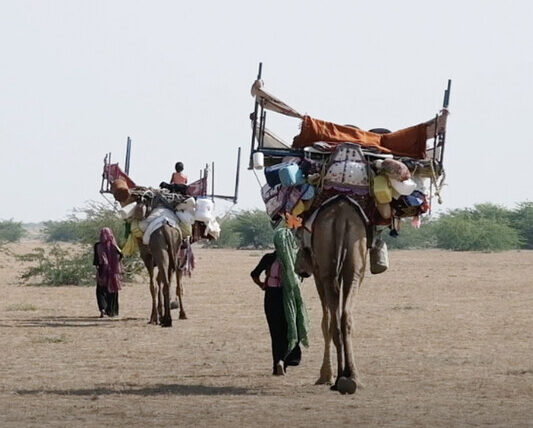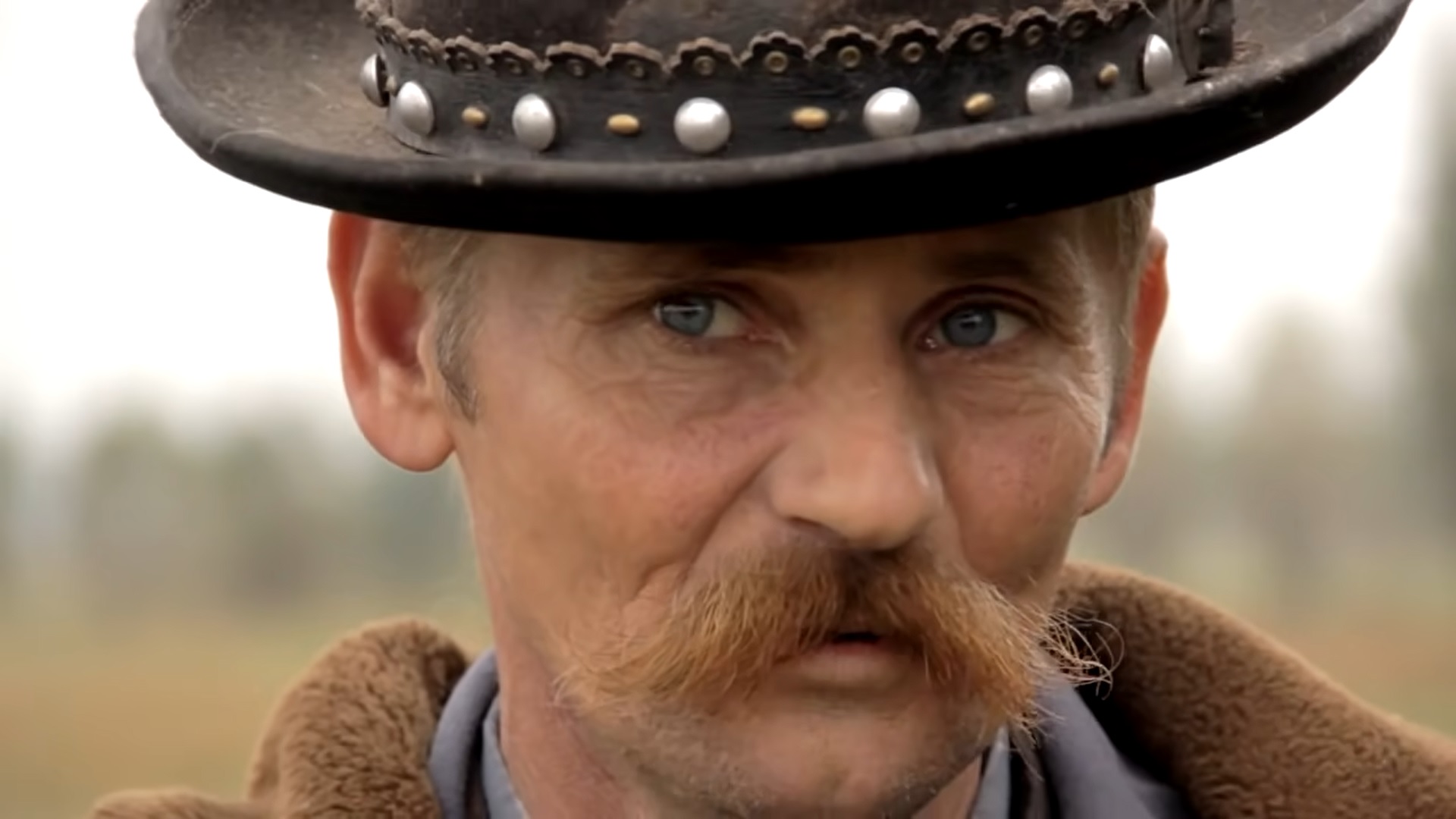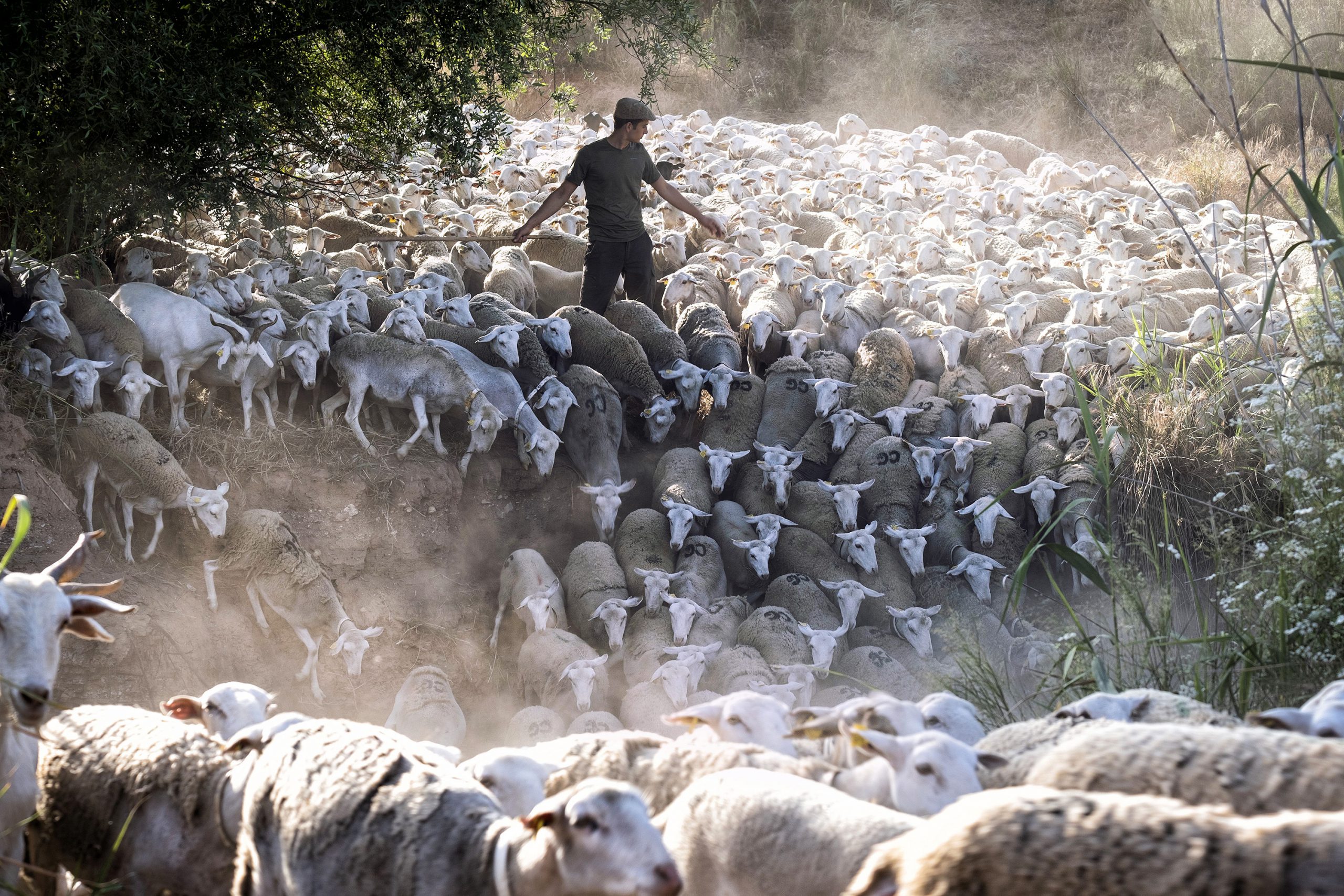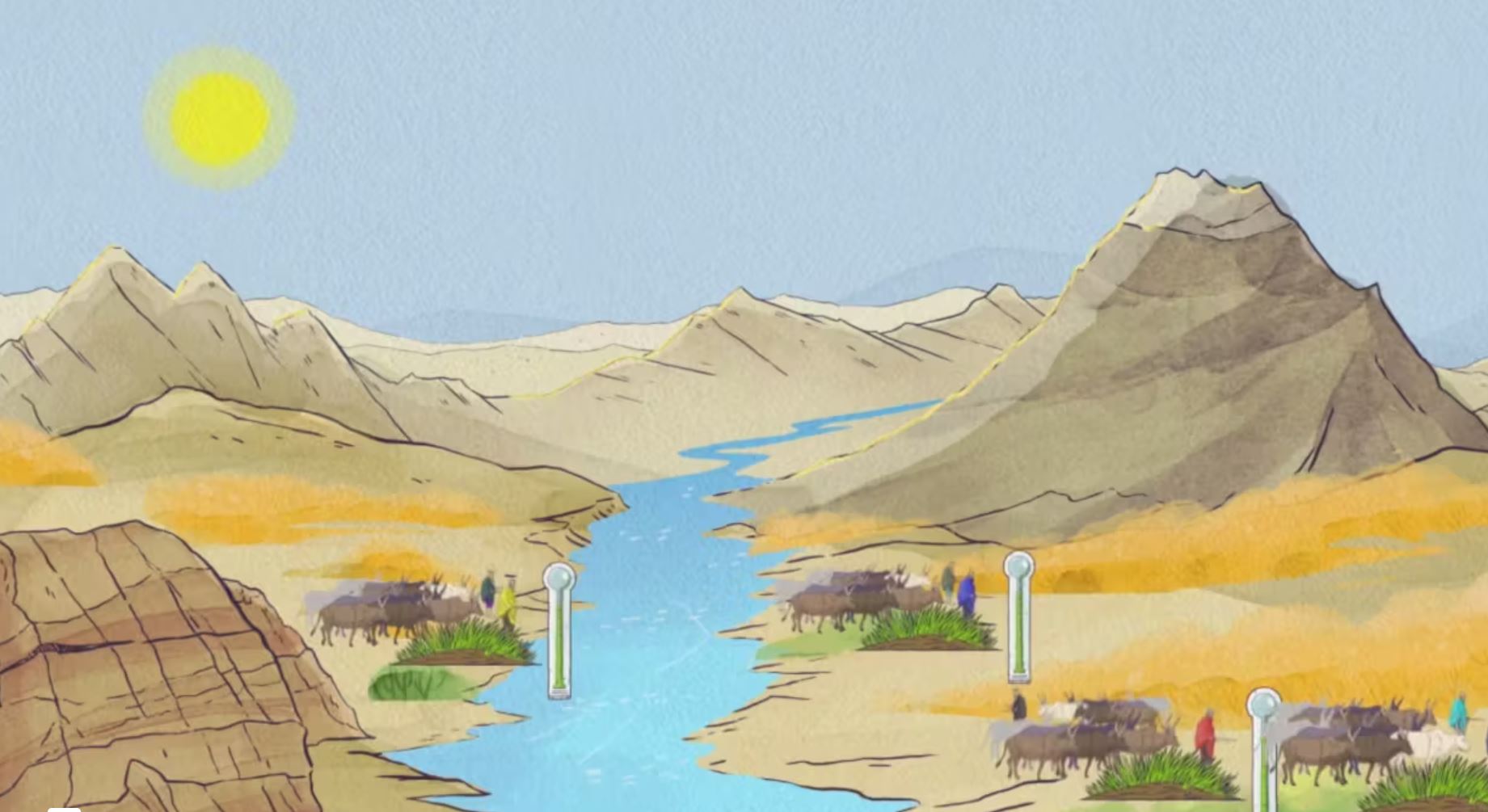The Tuareg of Kel Ewey travelled yearly across the Tenere Desert to exchange millet for dates and buy salt in the Bilma oasis; they sold the salt in the south and bought millet. This film follows a camel caravan that walked 600 km to trade in Bilma. A valuable historical document, it shows the endurance needed by people and camels to traverse the desert. With an introductory text but no narrative, this fascinating ethnography shows everyday activities of people and animals during the long journey.
Accompanying text by filmmaker Sarah Lunaček
For the Tuareg in northern Niger, the salt caravan combines the benefits of the salt trade and the camel’s annual grazing cycle. After wet-season grazing, the camels walk to the oases of Fachi and Bilma, 600 km to the east. They carry hay for their feed; the leather bags supporting the load contain millet. Some bags contain camel dung to use as fuel for cooking, together with wood collected on the way. In the oases, the Tuareg trade the millet for dates with local Kanuri people and buy salt from them. The Tuareg return to their home camps in Aïr, where the women keep the female camels and goats, and then take all the camels to better grazing – including crop residue – in the more humid south. The dung fertilises the millet fields of Hausa farmers for the next growing season. Selling salt and dates enables the Tuareg to buy millet for trade and to feed their families.
Camels drink before departure and after 15 days upon arrival in Bilma. At night, they eat the hay they are carrying; they are muzzled to prevent them from eating it during the day. Young camels are taken along to learn how to walk in single file, initially with no load, over long distances. The work during the caravan is hard for both people and animals. The loads of hay and especially salt are heavy. Loading must be done quickly because camels feel more comfortable when they walk, but complain when being loaded. We also see a traditional practice using hot ash to heal a camel’s bruise. In Bilma, the camels can rest while the people are trading and packing salt.
The trade was already becoming less profitable two decades ago, when this film was made, because trucks operated by Arab traders can transport salt faster and in larger quantities, lowering the price. With growing human population, cropping is spreading north into the pastures. Now, farmers rarely leave crop residue in the fields; they sell it or feed it to their own animals. The presence of terrorist groups also makes movement to the south very difficult. Only a few people continue the salt caravan.
In 2000, I was one of three Europeans who walked to Bilma together with 13 caravaners and 176 camels led by Madugu (leader) Mohamed Ally. We joined the herd of Al Hadji Alghabid, led by his son Ahmadan. Former caravaner Alhassane Haidara knew this family, made the contact and joined the caravan to help us.
I filmed in an ethnographic observational style: simply following what is happening, with no interference in action. No explanations are given in a voice-over; basic explanations are in the introductory text. This approach allows viewers to better immerse themselves in the film. I used a Digital 8 camera and edited the film to 4 hours in 2003. In 2024, for the International Year of Camelids, I shortened it to this 33-minute version focussed on the interactions between people and camels.
